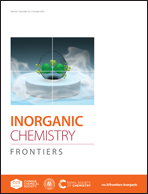Vertically aligned MoS2 nanosheets on N-doped carbon nanotubes with NiFe alloy for overall water splitting †
Abstract
Carbon based nanotubes have attracted significant attention as substrates for anchoring metal-based nanoparticles. Dopants endow these nanotubes with high activity as electro-chemical catalysts. Herein, N-doped carbon nanotubes (NCNTs) containing NiFe alloy nanoparticles (NiFe-NCNT) are prepared by calcining a mixture of NiFe Prussian blue analogue (NiFe-PBA) and melamine. MoS2 nanosheets are then loaded onto NiFe-NCNT via a hydrothermal process. The resulting MoS2-decorated NiFe-NCNT reveals excellent performance in overall water splitting at a cell voltage of 1.6 V to achieve a current density of 10 mA cm−2, because of its well-developed hierarchical structure and highly conductive NCNTs that enable efficient transport of generated carriers. The calcination temperature affects the hydrogen evolution reaction (HER) and oxygen evolution reaction (OER) activities of NiFe-NCNT. Further, loading MoS2 nanosheets improves the HER activities of the NiFe-NCNT. The amount of MoS2 nanosheets affects the activities of electrocatalytic overall water splitting. These materials reveal excellent electrocatalytic activity due to the synergistic effect of NiFe-NCNT and MoS2 nanosheets as well as the NiFe alloy nanoparticles.



 Please wait while we load your content...
Please wait while we load your content...